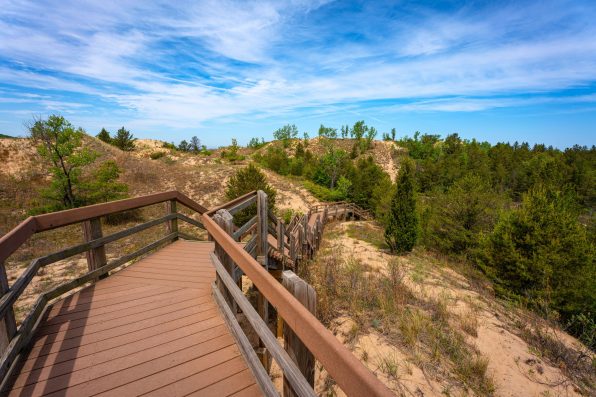Along the southern shore of Lake Michigan in Indiana, there sits a vast natural area that is known for its diverse ecosystems. The Indiana Dunes contain sand dunes, prairies, wetlands, and forests. Its over 15,000 acres is also home to a wide variety of plants and animals.
Today, the dunes are threatened by pollution and reckless development. Fortunately, it is a protected area, which has drawn more attention and increased resources for its preservation.
The fight to save the Indiana Dunes began in the early 20th century. When the National Park Service (NPS) was established in 1916, its first director made the protection of the dunes a priority. But before any conservation efforts could take place, the United States entered World War I.
After the war, dune conservation seemed impossible since industrialization and urban development were already invading the boundaries of the land.
Over the years, steel mills were built on top of the marshes, sand dunes were leveled for freight yards, toll roads and interstate highways plowed through nature, and neighborhoods began popping up in the surrounding area.
As more and more conservationists recognized the need to protect the dunes from destruction, efforts were made to highlight their ecological importance. In 1925, the Indiana Dunes State Park was established, protecting more than 2,000 acres of land.
Still, that was relatively small when there were 10,000 or more acres left to consider. The dunes eventually developed into a beachfront community. Within the first three months that the state park was open, it saw 63,000 visitors.
Efforts to preserve the dunes gained momentum in the 1950s and 1960s. In 1949, a woman named Dorothy Buell was inspired to help protect the dunes after returning home from a vacation to White Sands National Park in New Mexico.
In 1952, she formed her own conservation group, the Save the Dunes Council, which was made up of 21 local women. They raised money to purchase land to protect it from developers. They also enlisted the help of Senator Paul H. Douglas, who liked their idea of turning the dunes into a national park.

Sign up for Chip Chick’s newsletter and get stories like this delivered to your inbox.


